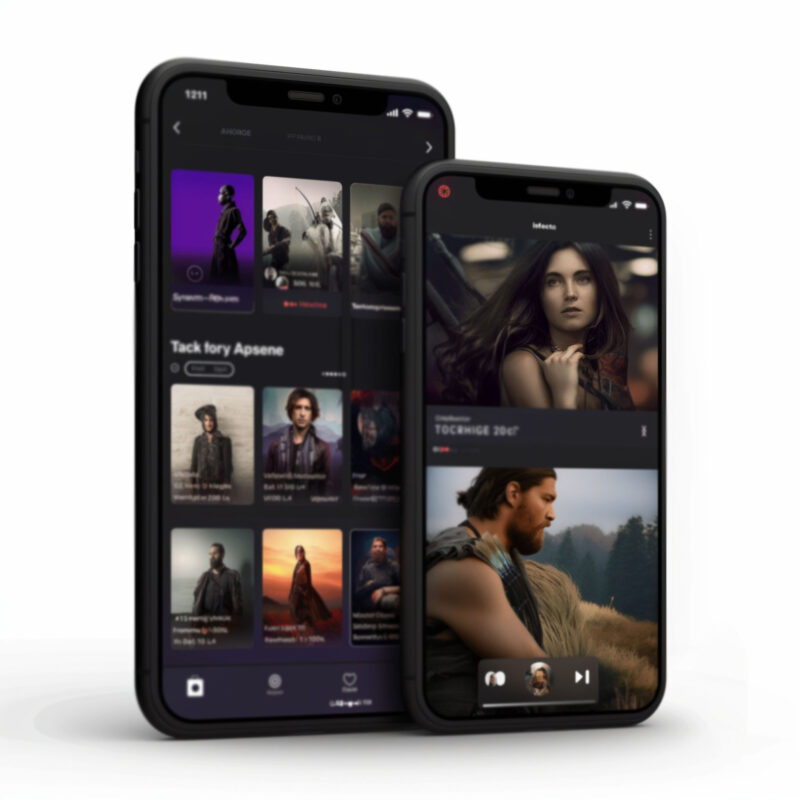Television has undergone a massive transformation in recent years. The rise of streaming services marks a significant shift. Platforms like Netflix, Hulu, and Amazon Prime Video have revolutionized how audiences consume content.
Traditional television networks face new challenges. This article will explore how streaming services are reshaping the television landscape.
Direct-to-Consumer Model
Streaming services offer a direct-to-consumer model. Filmmakers and content creators can reach audiences without intermediaries.
The model changes the distribution process. Creators no longer need to depend on traditional gatekeepers. Opportunities open up for diverse and niche content.
Another major benefit, this time from the audience’s perspective, is that consumers can access a broader range of broadcasts and streams than ever before.
Changing Viewing Habits

Streaming services have significantly altered how people watch television. Unlike traditional TV, viewers are not tied to fixed schedules.
On-demand content gives audiences the freedom to choose when and where to watch their favorite shows and movies. Such flexibility is one of the most appealing aspects of streaming services.
1. On-Demand Viewing
The concept of on-demand viewing means that content is available to the viewer at any time. There is no need to wait for a specific broadcast time. That allows people to integrate television into their lives more seamlessly.
They can watch an episode during lunch breaks, on their commute, or late at night.
2. Binge-Watching Phenomenon
Binge-watching refers to the practice of watching multiple episodes of a television series in one sitting. Streaming services often release entire seasons of shows at once, encouraging viewers to watch several episodes back-to-back.
Such an approach contrasts sharply with traditional television, where viewers have to wait a week for the next episode. The ability to binge-watch has changed the way stories are consumed and discussed.
3. Viewer Control and Customization
Streaming services put control in the hands of the viewer. Audiences can pause, rewind, or fast-forward through content. They can skip opening credits or recap segments, enhancing the viewing experience.
The high level of control was not possible with traditional TV. Customization extends to the ability to create personalized watchlists, ensuring that viewers never miss shows they are interested in.
4. Impact on Content Creation
The shift to on-demand and binge-watching has influenced how content is created. Showrunners and writers often design series with binge-watching in mind, for example, Friends, as one of the most-watched TV show globally!
Story arcs are crafted to maintain momentum across multiple episodes, ensuring that viewers remain engaged. Cliffhangers at the end of episodes encourage viewers to continue watching, increasing their investment in the series.
5. Changing Viewer Expectations
The rise of streaming services has led to higher expectations among viewers. Audiences now expect immediate access to entire seasons and high-quality content.
This expectation puts pressure on traditional TV networks to adapt their content delivery methods. Some networks have started offering streaming options for their shows to meet these demands.
Impact on Traditional TV Networks

Traditional TV networks must adapt to survive. The competition has increased. Advertising revenues have shifted. Many networks now offer their own streaming platforms. They aim to retain their audience base.
Some networks have even started producing exclusive content for their platforms. The strategy seeks to attract and retain subscribers.
Shifting Advertising Revenues
Advertising revenue, a primary source of income for traditional TV networks, has been significantly impacted. Many advertisers are shifting their budgets to digital platforms where they can reach larger, more targeted audiences.
Streaming services, particularly those with ad-supported models, have become attractive alternatives for advertisers. As a result, traditional TV networks are experiencing a decline in ad revenue, forcing them to explore new revenue streams.
Launching Own Streaming Platforms
To remain competitive, many traditional TV networks have launched their own streaming platforms. These platforms offer on-demand access to their content libraries, allowing networks to retain their audience base and attract new subscribers.
By providing a streaming option, networks aim to keep up with changing viewer preferences and offer the convenience and flexibility that modern audiences expect.
Exclusive Content Production
Producing exclusive content has become a key strategy for traditional TV networks. Exclusive shows and movies can attract subscribers to their streaming platforms. Successful original content not only draws viewers but also generates buzz and media attention, further boosting the network’s profile.
Content Variety and Quality

Streaming services provide an extensive content library. Unlike traditional TV, which often recycles old content, streaming platforms offer fresh and varied options.
Original programming has become a key focus. Shows like “Stranger Things” and “The Crown” have gained global popularity. High-quality content attracts subscribers and keeps them engaged.
Fresh Shows All the Time
Streaming platforms continually expand their content libraries with new shows and movies. The variety ensures that there is something for everyone, catering to diverse tastes and preferences.
Unlike traditional TV, where viewers might see the same reruns and limited new releases, streaming services offer a constant influx of fresh content.
Platforms invest heavily in producing exclusive content that cannot be found elsewhere. That strategy has led to the creation of a critically acclaimed and globally popular series.
The focus on high-quality original content helps streaming services differentiate themselves from traditional TV.
Personalization and Algorithms
Streaming platforms use sophisticated algorithms. Algorithms analyze viewing habits. Recommendations for content are based on user preferences. Personalization enhances the viewing experience.
Discovery of new shows and movies tailored to tastes is easier. Traditional TV lacks the same level of customization.
Enhanced Viewing Experience
Personalization goes beyond content recommendations. Some streaming platforms customize user interfaces, suggesting new content based on past viewing history. It makes it easier for users to navigate the platform and find something to watch.
Data-Driven Insights
Streaming services leverage data analytics to gain insights into viewer preferences. Getting the information helps platforms make informed decisions about what types of content to produce and acquire.
By understanding audience behavior, streaming services can continually refine their offerings to better meet viewer demands.
Impact on Advertising

The advertising landscape has shifted. Traditional TV relies heavily on advertisements. Streaming services, however, often operate on subscription models.
The model reduces the reliance on ads. Some platforms offer ad-supported tiers at lower prices. Advertisers have had to adapt. The focus on digital advertising strategies has increased.
- Shift from Ad Revenue
Traditional TV networks rely on advertising revenue. Commercials interrupt programming and can be seen as intrusive by viewers. Streaming services, on the other hand, often adopt subscription-based models that reduce or eliminate ads. That changes the dynamics of how content is monetized.
- Ad-Supported Tiers
Some streaming platforms offer ad-supported tiers at lower subscription costs. These tiers provide a compromise between ad-free viewing and affordability. Viewers who opt for these tiers experience fewer interruptions than traditional TV commercials, while platforms still generate ad revenue.
- Adaptation of Advertisers
Advertisers have had to adapt to the changing landscape. Digital advertising strategies have become more important. Targeted ads based on viewer data are more effective and less intrusive. Advertisers can reach specific demographics with precision, increasing the effectiveness of their campaigns.
Benefits of Digital Advertising
Digital advertising on streaming platforms offers several advantages. Advertisers can use data analytics to measure the success of their campaigns and make real-time adjustments.
Interactive ads and sponsored content provide new ways to engage viewers. These strategies offer a more personalized and effective approach compared to traditional TV ads.
Future of Traditional TV
The future of traditional TV remains uncertain. Networks must innovate to stay relevant and explore new technologies and formats to engage viewers.
Interactive TV, enhanced viewing experiences, and integration of augmented reality could attract tech-savvy audiences.
Focus on Live Events, News, and Sports
One area where traditional TV still holds an advantage is live events. Live broadcasts of news, sports, and special events remain popular.
Networks can capitalize on this by enhancing live coverage and offering unique experiences that streaming services cannot replicate. Exclusive rights to major sporting events and breaking news coverage can draw viewers who prefer real-time content.
Conclusion
Streaming services have fundamentally changed television. They offer a direct-to-consumer model, altered viewing habits, and introduced new challenges and opportunities for traditional TV networks.
The variety and quality of content have increased, driven by sophisticated algorithms and technological advancements. The future of traditional TV remains uncertain, but streaming services are here to stay, and their impact on television is undeniable.
